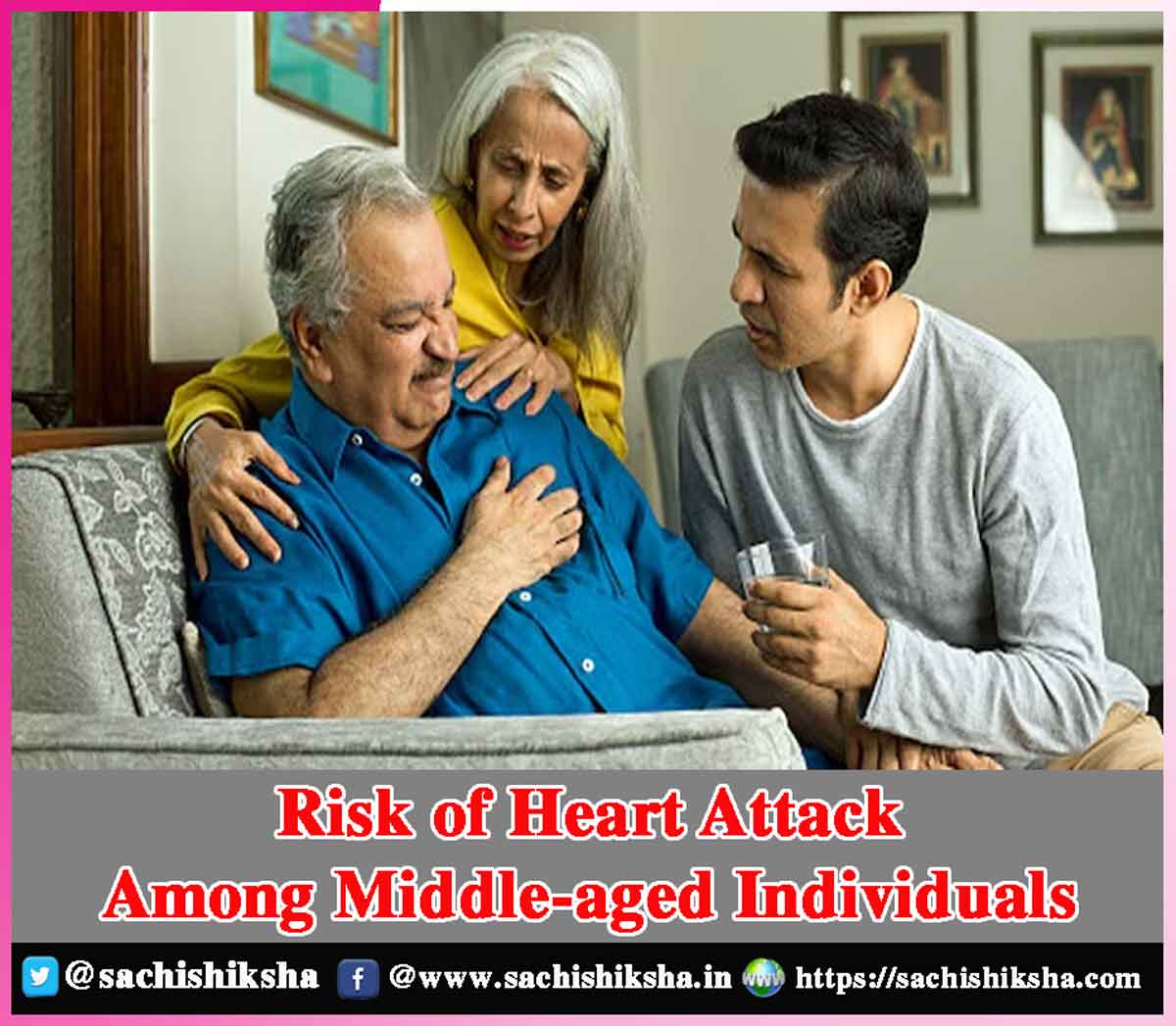Risk of Heart Attack Among Middle-aged Individuals
Introduction Heart attacks, or myocardial infarctions, are serious medical emergencies where the blood supply to part of the heart muscle is severely reduced or blocked, causing damage to the heart muscle. Traditionally associated with older age groups, heart attacks are increasingly becoming a significant concern for middle-aged adults.

Table of Contents
Understanding Heart Attacks
A heart attack occurs when one or more of the coronary arteries become blocked, leading to a reduction in blood flow and oxygen to the heart muscle. This blockage is usually caused by a buildup of fatty deposits (atherosclerosis) within the arteries, which can rupture and form a clot that obstructs blood flow. The lack of oxygenated blood can cause the heart muscle cells to die, resulting in permanent damage to the heart.
Rising Incidence of Heart Attacks in Middle Age
Historically, heart attacks were predominantly associated with older adults. However, recent studies have shown a worrying increase in the incidence of heart attacks among individuals in their 40s and 50s. Several factors contribute to this rising trend:
Lifestyle Changes:
Modern lifestyles characterized by poor dietary habits, lack of physical activity, and high stress levels contribute significantly to cardiovascular disease. Middle-aged adults often face demanding work schedules and family responsibilities, leading to unhealthy eating patterns, sedentary behaviour, and chronic stress.
Obesity and Diabetes:
The prevalence of obesity and type 2 diabetes has risen sharply in recent decades. Both conditions are major risk factors for cardiovascular disease, and their increasing incidence among younger adults correlates with the rise in heart attacks in middle age.
Smoking and Substance Use:

Hypertension and Hyperlipidemia: High blood pressure (hypertension) and high cholesterol levels (hyperlipidemia) are prevalent in middle age. These conditions can damage the arteries over time, leading to atherosclerosis and increasing the risk of heart attacks.
Symptoms and Warning Signs
Recognizing the symptoms of a heart attack is crucial for prompt medical intervention. Common symptoms include:
- Chest Pain or Discomfort: This is the most common symptom and may feel like pressure, squeezing, fullness, or pain in the center of the chest. The pain can radiate to the shoulders, arms, neck, jaw, or back.
- Shortness of Breath: Difficulty in breathing or shortness of breath can occur with or without chest pain.
- Nausea and Vomiting: Some individuals experience nausea, vomiting, or abdominal pain during a heart attack.
- Sweating and Dizziness: Excessive sweating (cold sweats) and dizziness are also common symptoms.
- Fatigue: Unexplained fatigue or weakness, especially in women, can be a symptom of a heart attack.
Risk Factors for Heart Attacks in Middle Age
Several risk factors contribute to the increased likelihood of heart attacks in middle age:
- Genetics and Family History: A family history of heart disease significantly increases the risk of heart attacks. Genetic factors can predispose individuals to conditions such as hypertension, hyperlipidemia, and diabetes.
- Lifestyle Factors: Poor diet, lack of physical activity, smoking, and excessive alcohol consumption are major lifestyle factors that contribute to cardiovascular disease.
- Medical Conditions: Conditions such as hypertension, diabetes, obesity, and metabolic syndrome increase the risk of heart attacks. Managing these conditions effectively is crucial for reducing cardiovascular risk.
- Psychosocial Factors: Chronic stress, depression, and anxiety have been linked to an increased risk of heart attacks. Middle-aged adults often face significant psychosocial stress related to career, family, and financial responsibilities.
Prevention Strategies
Preventing heart attacks in middle age involves a combination of lifestyle modifications, medical management, and regular health screenings. Key prevention strategies include:
- Healthy Diet: Adopting a heart-healthy diet rich in fruits, vegetables, whole grains, lean proteins, and healthy fats can help reduce the risk of heart disease. Limiting the intake of processed foods, saturated fats, and sugars is also important.
- Regular Exercise: Engaging in regular physical activity, such as brisk walking, jogging, cycling, or swimming, can improve cardiovascular health. Aim for at least 150 minutes of moderate-intensity exercise per week.
- 3.Smoking Cessation: Quitting smoking is one of the most effective ways to reduce the risk of heart attacks. Seek support from healthcare professionals, counselling, or smoking cessation programs if needed.
- Weight Management: Maintaining a healthy weight through diet and exercise can reduce the risk of obesity-related conditions such as hypertension and diabetes.
- Stress Management: Practicing stress-reduction techniques such as mindfulness, meditation, yoga, and deep breathing exercises can help manage chronic stress and improve overall well-being.
- Regular Health Screenings: Regular check-ups with healthcare providers can help monitor blood pressure, cholesterol levels, and blood glucose levels. Early detection and management of risk factors are crucial for preventing heart attacks.
Treatment and Rehabilitation
In the event of a heart attack, prompt medical intervention is essential to minimize damage to the heart muscle and improve outcomes. Treatment options include:
- Medications: Various medications are used to manage heart attacks and reduce the risk of future events. These include antiplatelet agents (aspirin), anticoagulants, beta-blockers, ACE inhibitors, statins, and thrombolytic agents (clot-busting drugs).
- Percutaneous Coronary Intervention (PCI): Also known as angioplasty, PCI involves inserting a catheter with a balloon into the blocked artery to open it up and restore blood flow. A stent may be placed to keep the artery open.
- Coronary Artery Bypass Grafting (CABG): In cases of severe blockages, CABG surgery may be performed to bypass the blocked arteries and restore blood flow to the heart.
- Cardiac Rehabilitation: After a heart attack, cardiac rehabilitation programs provide supervised exercise, education, and support to help individuals recover and reduce the risk of future heart attacks.
Conclusion
The increasing incidence of heart attacks in middle-aged adults is a concerning trend that underscores the importance of addressing cardiovascular risk factors early in life. Understanding the symptoms, risk factors, and prevention strategies is crucial for reducing the burden of heart disease in this age group. By adopting a heart-healthy lifestyle, managing medical conditions, and seeking regular health screenings, middle-aged individuals can significantly reduce their risk of heart attacks and improve their overall quality of life.














































